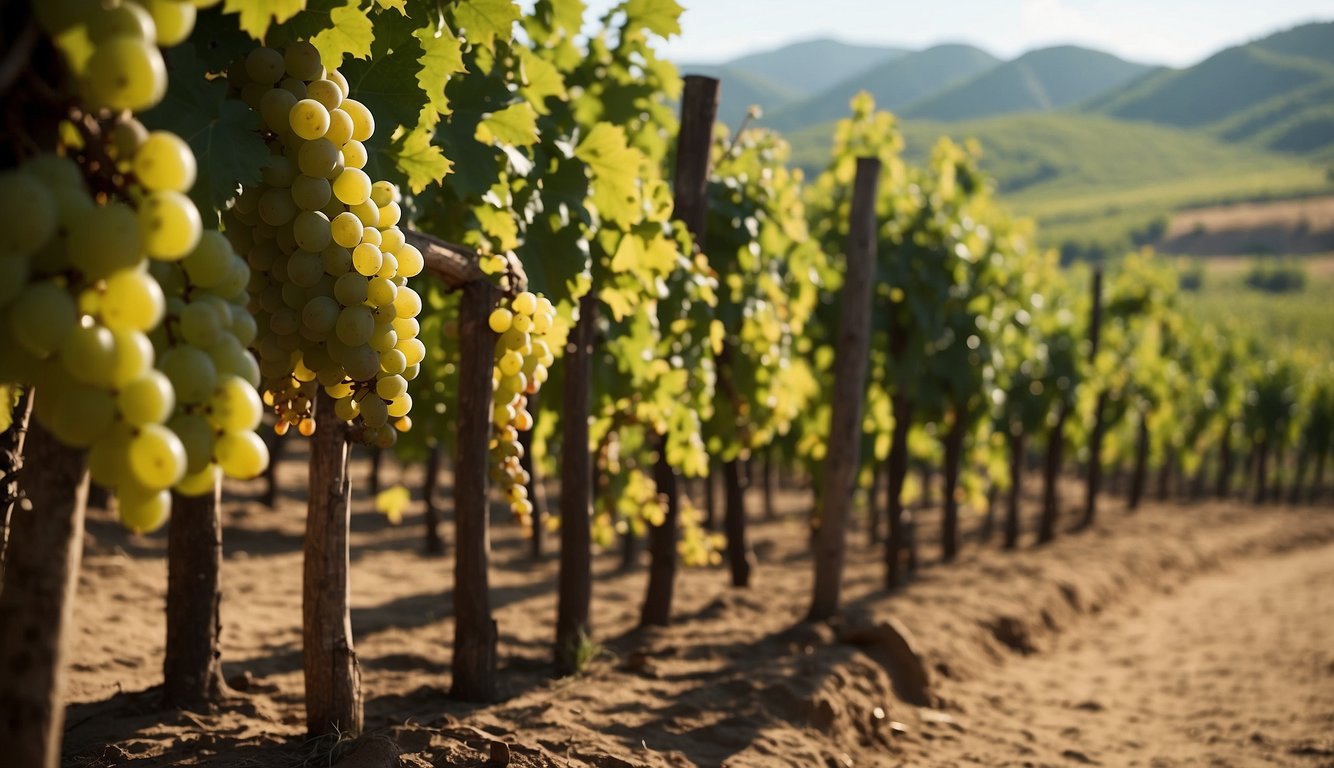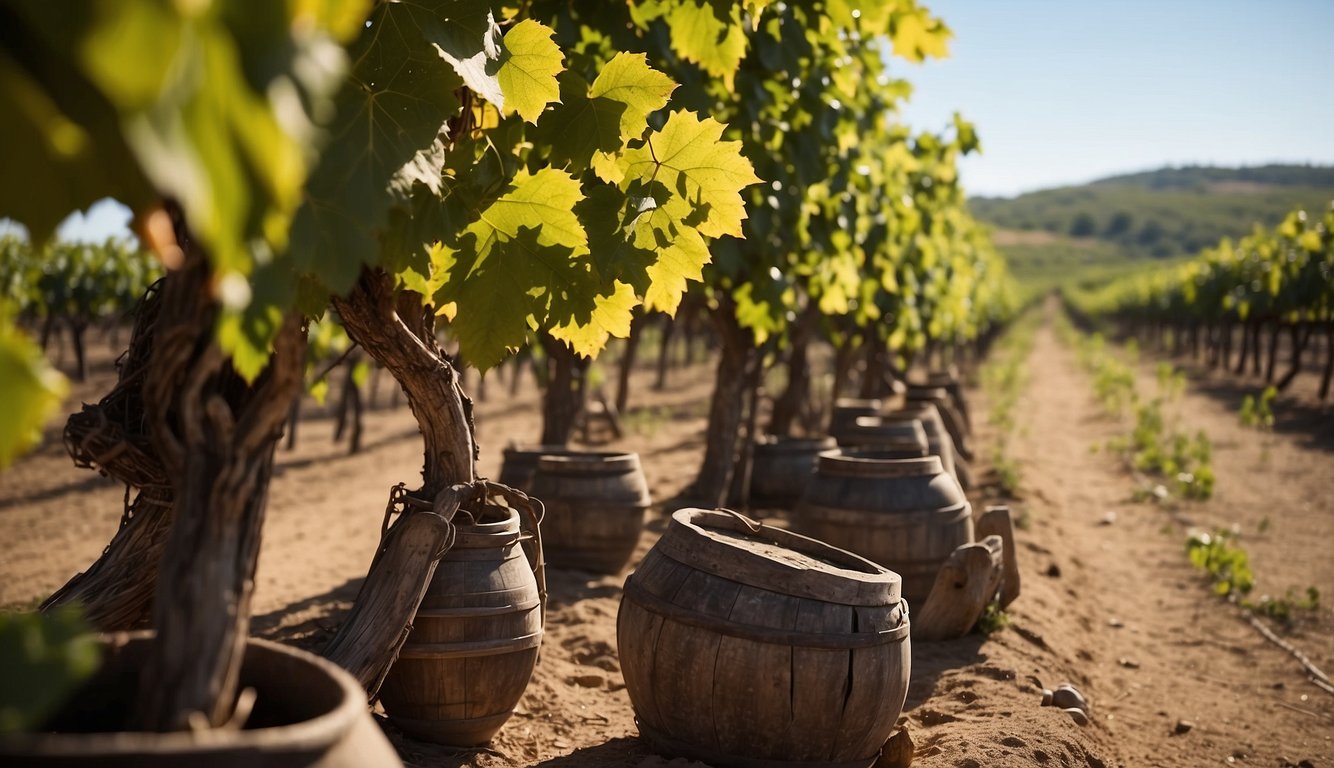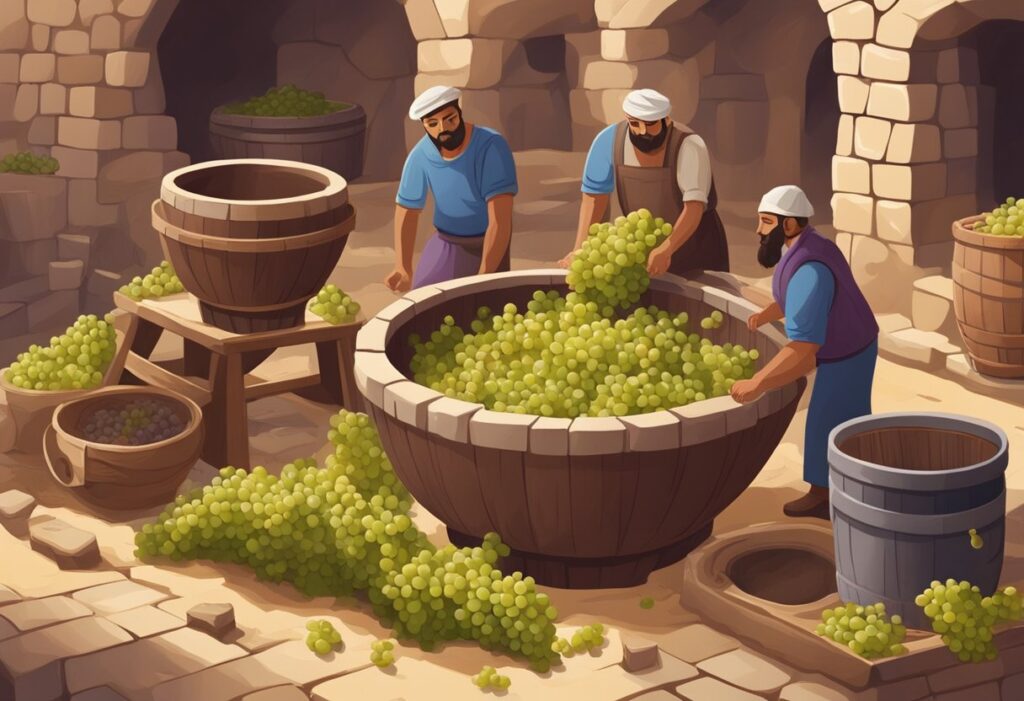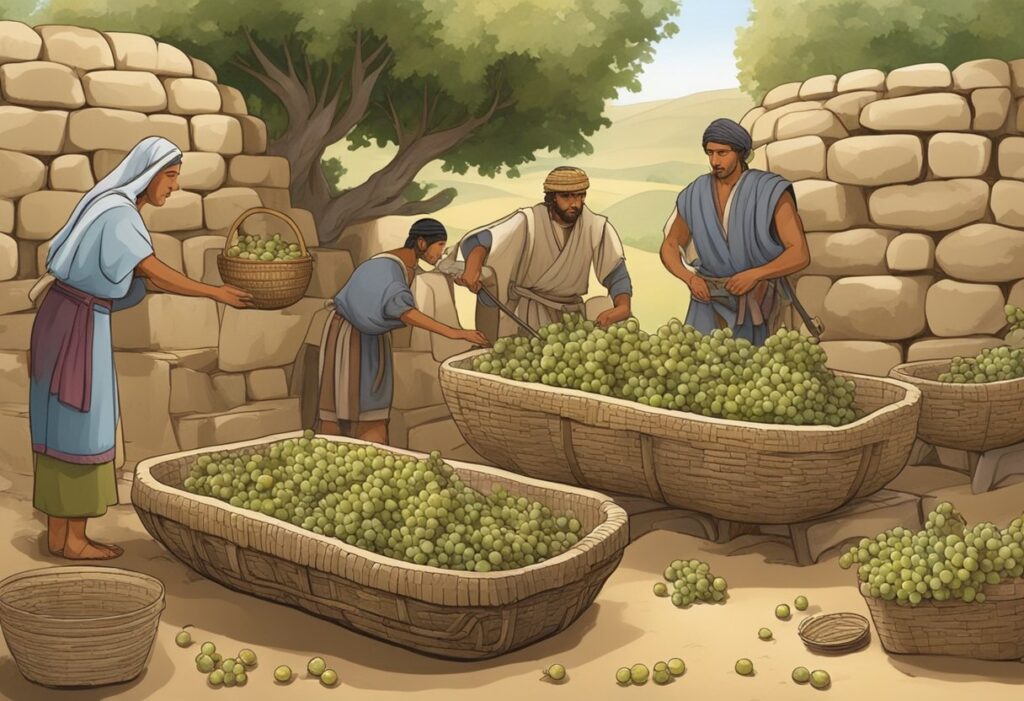Imagine uncovering a time capsule that takes you back 8,000 years to the earliest days of winemaking. This ancient practice began around 6,000 B.C. in the region now known as Georgia, where the world’s first known vintners produced wine on a large scale. This fascinating discovery redefines our understanding of human ingenuity and the social rituals surrounding wine.

Archaeologists have also found evidence in the Zagros Mountains of Iran, dating back to between 5500 B.C. and 5000 B.C., showing that early humans were deeply engaged in the art of winemaking. Excavations reveal that winemaking is even older than previously thought, and these early winemakers were pioneers who laid the foundation for our modern wine culture.
By examining ancient pottery, scholars have traced these origins and revealed insights into prehistoric life. These early winemakers not only mastered the fermentation process but also transformed societal norms and community gatherings. Understanding the roots of winemaking helps you appreciate each glass of wine even more, knowing it carries millennia of history and craftsmanship.
Historical Context of Viticulture
Viticulture, the cultivation of grapevines, has deep roots in human history. Exploring this history helps us trace the journey from wild-growing grapevines to the cultivated vineyards we see today.
Early Evidence of Winemaking in the Near East
Winemaking in the Near East dates back thousands of years. The earliest evidence suggests that winemaking began around 9,000 years ago in China. But it was around 3,500 BC that viniculture really took off in the Near East.
*Grape seeds and fermentation jars have been found in archaeological sites, showing that communities in regions like modern-day Georgia, Turkey, and Iran were producing wine.
The Phoenicians played a crucial role in spreading viticulture. By the 4th millennium BCE, they were exporting wine across the Mediterranean, making Byblos and Canaan central hubs for wine trade.
Significance of the Eurasian Grapevine
The Eurasian grapevine (Vitis vinifera) is critical to the history of winemaking. This particular species, with its ability to produce the best-quality wine, became the backbone of viticulture.
99% of today’s wine comes from this species. Varieties like Cabernet Sauvignon and Shiraz are derivatives of Vitis vinifera. This species, found in temperate zones from Europe to Asia, was ideal for domestication.
Knowing the value of these vines, early farmers cultivated them, selecting traits that improved grape quality and yield. These efforts laid the foundation for modern wine production.
Domestication and Spread of Grape Cultivation
The domestication of grapevines transformed agricultural practices. Early farmers selected wild grapevines with desirable traits, gradually developing cultivated varieties.
These efforts spread beyond the Near East. Ancient civilizations in Egypt and Greece adopted viticulture, further refining grape cultivation techniques. Canaanite jars found in Egypt highlight the trade connections and importance of wine.
As viticulture spread, regions like the Mediterranean became major wine producers. Techniques evolved, and grapes like Gewürztraminer emerged from these early farming practices. Today, wine from these domesticated varieties continues to be enjoyed worldwide.
The Neolithic Revolution and Winemaking
During the Neolithic period, humans began farming and domesticating animals. These developments led to the creation of new foods and beverages, including wine. The South Caucasus region, particularly modern-day Georgia, played a significant role in early winemaking practices.
Development of Agriculture and Fermented Beverages
In Neolithic times, people started to farm and grow crops. This shift from hunting and gathering to agriculture marked a major change in human history. Staple crops like wheat and barley became essential, and fruits such as grapes were cultivated.
With the origins of agriculture, humans discovered how to ferment these fruits. Fermented beverages, such as wine, became a part of everyday life. The development of wine involved fermenting grapes in jars, which offered not only a delicious drink but also a way to preserve the fruit’s nutrients for longer periods.
Archaeological Discoveries in the South Caucasus Region
Archaeological discoveries in the South Caucasus region have provided important insights into early winemaking. Excavations at sites like Gadachrili Gora and Shulaveris Gora unearthed 8,000-year-old clay jars containing traces of grape wine. This makes Georgia a significant location in the story of wine’s past.
The Georgian National Museum has played a crucial role in these findings. You can explore the oldest evidence of winemaking, dating back to around 6000 B.C., revealing that ancient societies in this area were early wine producers.
The Role of Wine in Neolithic Societies
Wine was more than just a drink in Neolithic societies; it held cultural and social significance. People used wine in rituals, religious ceremonies, and social gatherings. It was a symbol of hospitality and a means to form bonds between members of the community.
The environmental conditions of the region, such as fertile soil and favorable climate, supported grape cultivation. The use of wine in daily and special events shows its importance in the social fabric of these ancient societies. Wine production became an integral part of the Neolithic community’s lifestyle, reflecting both their agricultural skills and their cultural practices.
The Birthplace of Winemaking

Exploring the earliest evidence of winemaking uncovers fascinating details about ancient societies and their advanced techniques. Key discoveries in the Republic of Georgia highlight significant archaeological findings.
Gadachrili Gora: A Pivotal Archaeological Site
Gadachrili Gora is an essential location in the history of winemaking. Situated in the Republic of Georgia, this site has yielded important finds related to early wine production. Researchers have discovered pottery fragments and ceramic jars containing residues of what is believed to be ancient wine. These artifacts date back to around 6000 BC, suggesting large-scale production of wine.
The discoveries at Gadachrili Gora provide insights into the early techniques used by prehistoric humans. The region’s climate and geography likely played a crucial role in the development of viticulture and winemaking. This site continues to be a focal point for archaeologists who study the origins of wine.
The Importance of Residue Analysis
Residue analysis is a critical method in understanding ancient winemaking. At Gadachrili Gora, scientists have examined grapevine residues and other organic materials found in pottery. These residues contain tartaric acid, a key chemical marker for grapes and wine. Identifying tartaric acid helps confirm that the vessels were used for fermenting and storing wine.
By analyzing these residues, researchers can piece together the winemaking processes of ancient peoples. This type of analysis helps distinguish between different uses of the vessels, ensuring accurate interpretations of their purpose. The presence of tartaric acid solidifies the role of Georgia as a significant early winemaking region.
Interdisciplinary Studies and Radiocarbon Dating
Interdisciplinary studies combine expertise from various fields to enhance the understanding of ancient winemaking. The Gadachrili Gora Regional Archaeological Project Expedition (GRAPE) is a prime example. This project brings together archaeologists, chemists, and historians to explore the site comprehensively.
Radiocarbon dating plays a crucial role in these studies by providing precise age estimates for the artifacts. By dating the residue and ceramic jars, researchers can place the origins of winemaking in a timeline. Radiocarbon data from Gadachrili Gora indicates that wine production originated around 6000 BC, marking it as one of the earliest known sites for winemaking.
These interdisciplinary approaches offer a complete view of the early development of winemaking, ensuring that conclusions are based on solid evidence and diverse perspectives.
Technological and Cultural Advances in Winemaking

Winemaking has evolved significantly through various technological and cultural advances. These advances include innovations in pottery and storage, wine’s deep cultural roles, and the ingenuity of early humans in perfecting the craft.
Innovations in Pottery and Storage
The development of pottery played a crucial role in advancing winemaking. Early winemakers in the ancient Near East and Egypt used large clay jars to ferment and store wine. These jars, known as amphorae, were essential for the fermentation process.
Pottery innovation included creating airtight seals and using coatings like resin to prevent leaks and contamination. Such storage solutions allowed wine to age properly, enhancing its flavor and making it safer to drink.
Additionally, archaeologists discovered that villages in ancient times invested significant effort into the crafting of these vessels, often with intricate designs that indicated status or ownership.
Cultural Roles of Wine in Early Societies
Wine was not just a beverage but a significant part of early societies’ culture. It played a vital role in religious ceremonies, where it was often offered to gods or used in rituals. For example, ancient texts and pictorial evidence show that wine was prominent in cultures like Mesopotamia and Egypt, where it had religious and social significance.
Wine culture extended to daily life, where it served as a social lubricant. People gathered to drink wine during feasts and celebrations, which helped strengthen community bonds. Moreover, wine was also used as a mind-altering substance, providing a means of relaxation and leisure.
Furthermore, early medicines sometimes included wine, taking advantage of its properties to treat various ailments, making it a staple in ancient cuisines and medical practices.
Winemaking as an Aspect of Human Ingenuity
The ingenuity of early humans in winemaking is evident through their ability to cultivate grapes, innovate fermentation techniques, and improve storage methods. Early viniculture techniques showed sophisticated farming practices where grapes were selected and cultivated for optimal wine production.
Polished stone tools were used to crush grapes efficiently, improving the extraction of juice. Communities, including those studied by the University of Toronto’s Department of Near and Middle Eastern Civilizations, demonstrated remarkable skills in this craft.
Their knowledge of fermentation, combined with trial and error, led to refining the winemaking process, turning it into a significant aspect of human creativity and resourcefulness. The ongoing improvements and adaptations in winemaking reflect the resilience and innovation of early societies.
Modern Insights and Research

Modern research in winemaking has been greatly influenced by the discoveries and contributions of global academia. Efforts to preserve the legacy of ancient winemaking are crucial in understanding the evolution of this practice.
Contributions from Global Academia
Researchers from the University of Pennsylvania and the University of Toronto have played important roles in uncovering early evidence of winemaking.
Stephen Batiuk from the University of Toronto and T. Cuyler Young have been pivotal in recent excavations. Their work, supported by the Royal Ontario Museum and published in the Proceedings of the National Academy of Sciences, has pushed the date of winemaking back to about 6000 BC.
The research conducted by these interdisciplinary teams often includes a Canadian component, showcasing collaboration between countries like Denmark and Canada.
Preserving the Legacy of Ancient Winemaking
David Lordkipanidze‘s focus on the South Caucasus region has been instrumental in revealing the origins of winemaking. Excavations at sites like Hajji Firuz Tepe in the Zagros Mountains of Iran show evidence that winemaking practices started much earlier than previously thought.
Efforts to preserve these findings not only highlight the history of table grapes but also involve showcasing these discoveries in museums and academic journals. The documentation and preservation of these findings are often published in Proceedings of the National Academy of Sciences (PNAS), ensuring that future generations can appreciate and learn from this rich heritage.

